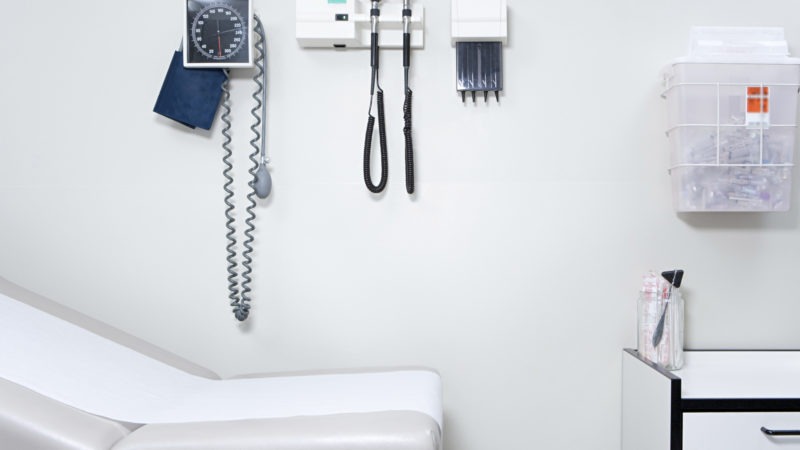When first faced with COVID-19 in early 2020, doctors sprang into action as they attempted to find new and workable ways of triaging patients, treating the illness, and minimizing its spread. However, in-patient visits plummeted as patients either avoided routine care or opted for telehealth visits instead. This sudden drop in patient load left many clinics rethinking their real estate strategy. Now, some six months later, we have a much better handle on the virus, and in-person visits have largely recovered to their pre-pandemic numbers – although patients still remain wary of exposure.
READ MORE
An Exceptional Medical Building Experience: Discover the 1145 19th Street NW Redevelopment
1145 19th Street NW is a newly renovated Class A medical office building located between M and L Streets in the heart of Washington, DC’s Central Business District. Spanning 133,000 RSF over eight stories, the building features a new sleek all-glass exterior cladding featuring energy-efficient windows, a welcoming double-height lobby, and abundant new building amenities.
READ MORE
Prepare for Positive Change: How to be Agile During Changes in the Healthcare Profession
It’s long been a truism that adaptable healthcare organizations are successful ones. Even when times are good, healthcare organizations have to adjust to changing patient loads, shifting demographics, along with legislative, financial, and regulatory changes. Now more than ever, we’re seeing just how vital it is that healthcare organizations can draw upon a culture of resiliency to nimbly adapt to changing market conditions. Here’s how to ensure that your organization is among those that can.
READ MORE
The Future of Healthcare: How Artificial Intelligence is Impacting Medical Practices
Artificial Intelligence (AI) is changing how the world works with data. Its ability to analyze, decode, and draw predictions from enormous datasets makes it a tremendous asset to any data-heavy sector – healthcare among them. But while most clinicians are likely to associate AI with lofty, yet-to-materialize efforts to eradicate cancer, AI actually has dozens of real and immediate applications that healthcare professionals can take advantage of right now.
READ MORE
Healthcare Transformation: Why Telemedicine Alone Falls Short for Medical Practices
Telemedicine has skyrocketed during COVID-19, with many patients using it as an alternative to in-person care. However, while telehealth has made it possible for patients to receive routine care without the risk of exposure of viral spread, it’s at best a complement to existing care provision – not a replacement.
READ MORE
The Lasting Impact of COVID-19 on Healthcare System
Healthcare delivery has changed dramatically over the past few months. We’ve seen significant adjustments to policies around personnel, procedures, and delivery, and further changes are likely ahead. However, although these changes are novel, they’re not necessarily unexpected. According to Gensler, large “shocks” to the healthcare system have historically been the impetus behind large-scale healthcare delivery shifts. The 1918 ‘flu pandemic, for example, drove major change in disease prevention, hospital design, and public health initiatives.
So, what might COVID-19 mean for the future of our healthcare system?
READ MORE
A Healthy Environment Starts with a Healthy Building
When we talk about taking care of the environment, we’re usually referring to the outside world. However, with most of us spending the majority of our lives indoors – especially now – we should really be considering the value of a healthy built environment.
READ MORE
Using Telehealth to Care for Patients
COVID-19 has reshaped the world at large – and also how medical practices offer care for patients. Telehealth and virtual care have become key in providing treatment for patients with COVID-19 and non-COVID-19 related ailments. Efficient, affordable, and easy to implement, they promote social distancing, protect providers and patients, and free up valuable hospital resources for those who need it the most.
READ MORE
The Importance of Online Patient Portals
Online patient portals are quickly becoming a central part of the healthcare delivery experience. While some providers may be hesitant to introduce them due to the costs and learning curve involved in a new technological implementation, they offer myriad benefits to both patient and provider.
READ MORE
Keeping Pulse with What Consumers Want from Primary Care
Physicians and medical practices looking to attract new clients and develop loyal patients need to understand how patients work. Patients typically wait until they’re sick before they select a provider.
So, whoever they see for this season’s flu will likely be who they return to for other services. Where a patient receives important episodic care influences and often decides where they’ll go for a mammogram or a physical. Given they had a good experience, of course.
READ MORE
How Medical Offices Should Communicate to Patients About Viral Outbreaks
The novel coronavirus (COVID-19) continues to spread across every populated continent. With widespread outbreaks throughout the US, counties, cities, and states are taking powerful mitigating steps to “flatten the curve.” The aim of the measures, which include “social distancing” and working from home, is to help spread out the impact of the virus to avoid overwhelming our hospital systems.
However, these measures have had a substantial economic impact on businesses across all industries, including medical clinics. Fearful of potential exposure, patients are avoiding seeing their physicians. Others are relying heavily on telemedicine, which has traditionally had stricter reimbursement requirements. The result is fewer patients and less revenue – although the bills continue to arrive as usual.
Here’s what medical practices can do to help keep the lights on until we find ourselves on the other side of the exponential part of the curve.
READ MORE
Medical Office Buildings Are the New Mixed-Use Developments
We’re all familiar with mixed-use developments: large spaces that meld different types of buildings, and which function as a sort of community hub drawing people from all walks of life. While these sorts of developments have long been associated with commercial, retail, and residential spaces, we’re increasingly seeing the same principles being applied to medical office buildings (MOBs).
READ MORE

